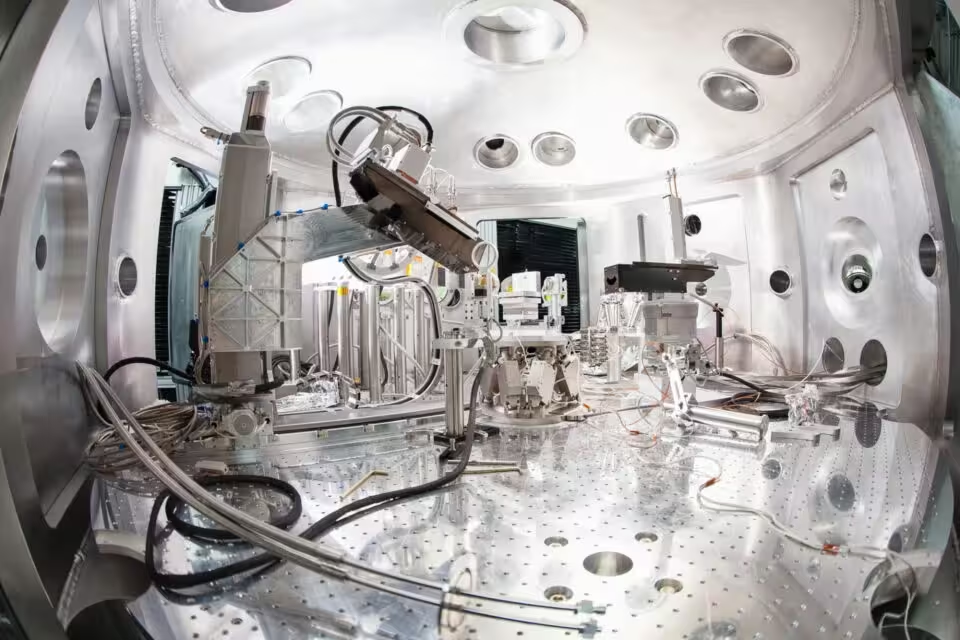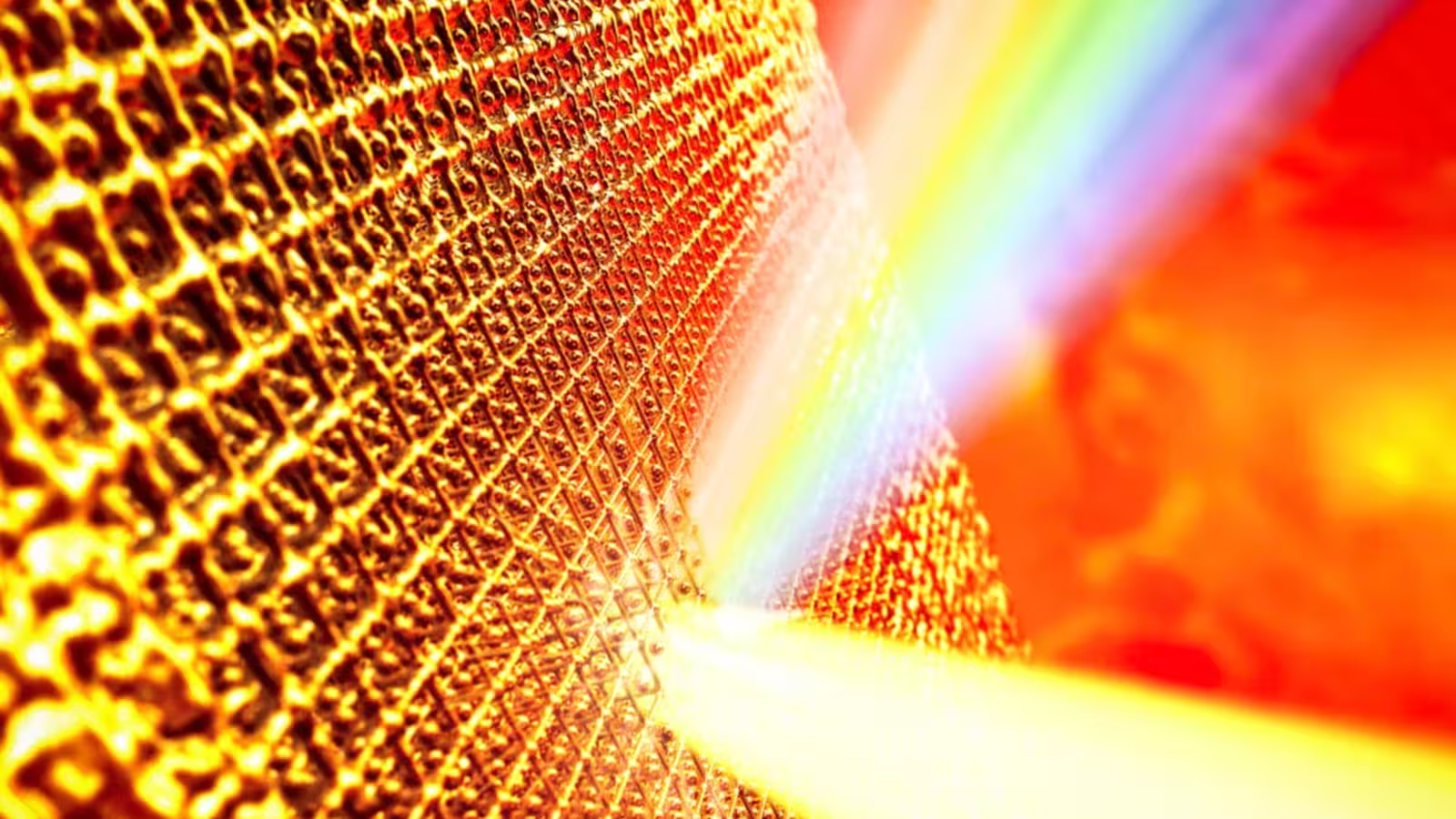6 Minutes
Rewriting the Rules: Measuring Superheated Gold with Giant Lasers
In a landmark experiment poised to reshape fundamental physics, a team of international physicists at the SLAC National Accelerator Laboratory has achieved what was long considered impossible: directly measuring the temperature of gold at extreme conditions using a state-of-the-art X-ray laser. The discovery, reported in Nature, not only redefines our understanding of matter under immense heat and pressure but also promises transformative applications in fields as diverse as nuclear fusion technology, spacecraft design, and astrophysics.
Scientific Background: Pushing Materials Beyond Their Limits
For decades, scientists have relied on theoretical models to predict the behavior and limitations of materials under superheated and high-pressure states. Gold, a universally recognized element, was assumed to have a superheating threshold—roughly three times its boiling point, according to established physical chemistry theory. Exceeding this limit, it was believed, would inevitably lead to catastrophic breakdown or "entropy catastrophe," where the metal should rapidly disintegrate.
Superheated materials, which exist in a precarious state between solid and liquid, play crucial roles in understanding the universe's most extreme environments, from the interior of stars to heat shields on spacecraft and plasma conditions inside nuclear fusion reactors. Yet, until now, directly measuring the true thermal state of such matter remained out of reach.

The Experiment: Harnessing Extreme Lasers at SLAC
Step 1: Generating the Extremes
The SLAC team began by exposing tiny gold samples to the immense energy of a powerful laser. This process forced the metal to temperatures up to fourteen times its boiling point (over 18,700°C or 33,700°F)—a regime never before directly measured. In doing so, the researchers temporarily suppressed gold’s natural tendency to rapidly expand or vaporize, effectively suspending the metal in a remarkable liminal state for several trillionths of a second.
Step 2: Direct Temperature Measurement
While in this state, the gold samples were struck with ultrabright X-ray pulses from a giant free-electron laser. As the X-rays interacted with the superheated gold, they scattered in distinctive patterns. By meticulously analyzing how the energy and frequency of the scattered X-rays changed—an effect highly sensitive to atomic movement—the team could, for the first time, directly calculate the true speed and temperature of the gold atoms under these intense conditions.
"Temperature is a fundamental property of physics and material science; yet, traditionally, we can only measure its effects on something else, like a mercury thermometer does," explained Dr. Bob Nagler, senior author and SLAC staff scientist. "This method finally lets us see temperature itself at these extremes."
Challenging Conventional Theory: No Superheating Limit?
The experiment yielded a bombshell result: contrary to nearly a century of accepted theory, gold showed no definitive superheating limit within the parameters tested. While physicists expected the sample to spontaneously vaporize at roughly three times its boiling point (1,064°C or 1,948°F), the team observed that the gold endured to a stunning 18,726°C (33,740°F)—five times past this theoretical maximum—before its structure finally broke down.
Lead researcher Dr. Thomas White of the University of Nevada, Reno, described the excitement and disbelief in the lab: "We stared at our results and had to double-check the axes. It was so far beyond any expectation, we thought it must be a mistake. But the data was clear—gold can survive these extremes, at least for a fleeting moment."
Though the sample lasted just trillionths of a second before exploding, this was more than enough time to capture the elusive data, upending old models and opening a new chapter in materials science.
Implications for Science, Space Exploration, and Fusion Energy
Practical Measurement in Extreme Environments
One of the most significant outcomes of this research is its immediate relevance to real-world scenarios. Modern fusion reactors, like those at the National Ignition Facility, use gold cylinders ('hohlraums') to concentrate X-rays and achieve the conditions necessary for nuclear fusion—the same process that powers stars. Until now, monitoring the actual temperature of these components was fraught with uncertainty.
"With our new technique, we finally have a true thermometer for these extreme experiments," Dr. White noted. "This could dramatically improve our ability to engineer fusion reactors, optimize heat shields for spacecraft, and even study the hearts of stars more accurately."
Revisiting Long-Standing Problems
Accurately measuring temperatures inside fusion chambers or during atmospheric re-entry has remained a great technical challenge. Conventional tools simply do not survive or reflect the real physics in these harsh environments. The method developed at SLAC, using high-intensity X-ray scattering, may soon set a new standard for temperature measurement in the most extreme laboratories on Earth and beyond.
Expert Voices: The Joys and Surprises of Fundamental Discovery
The excitement in the research community is palpable. As Dr. White quipped: “I’m grateful to have a job where I get to blow stuff up with giant lasers for the sake of discovery.”
Dr. Nagler offered a more philosophical perspective: “Understanding temperature at this level of precision allows us to rethink what’s possible regarding matter’s behavior under conditions found in stars, fusion engines, or even planetary cores.”
Future Directions: Expanding the Frontiers of Extreme Matter Research
The research team is already adapting their methods to explore the superheated states of other elements—including silver and iron—with promising early results. Over the coming months, they plan to analyze how different metals respond when pushed past their presumed limits, potentially rewriting textbooks in condensed matter physics and materials engineering.
There are also plans to conduct fully fusion-centric tests, aiming to directly probe the behavior of fusion materials as never before. Each experiment brings the scientific community closer to building more robust fusion reactors, safer space vehicles, and a deeper understanding of how the universe’s most extreme environments operate.
Conclusion
This extraordinary experiment at SLAC National Accelerator Laboratory demonstrates that even our most established scientific principles can be overturned with innovative technology and bold experimentation. By directly measuring the temperature of gold pushed far beyond its theoretical superheating limit, researchers have not only dispelled an old physics model but also paved the way for new advances in space exploration, fusion energy, and the study of the cosmos. As the scientific community continues to probe the fundamental limits of matter, one thing is clear: the frontiers of knowledge are far from closed.
Source: gizmodo



Comments